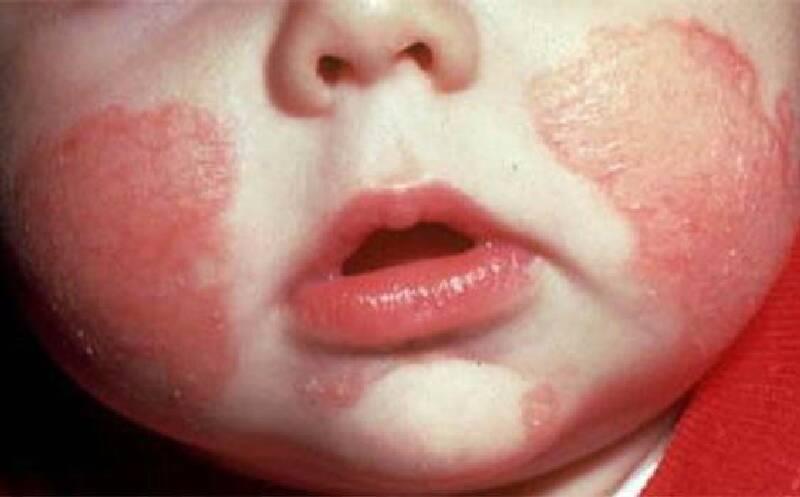Infantile eczema (Atopic dermatitis) is the first allergic disease observed in individuals predisposed to allergies due to heredity. It can be seen in 1-2 out of every 10 children, and its frequency is increasing, as with all other allergic diseases.

Infantile eczema (Atopic dermatitis) is the first allergic disease observed in individuals predisposed to allergies due to heredity. It can be seen in 1-2 out of every 10 children, and its frequency is increasing, as with all other allergic diseases. This increase is attributed to factors such as distancing from natural life, the decrease in diseases due to widespread antibiotic and vaccine use, increased stress, and the rise in indoor allergens in urban living.
Typically characterized by dry, red, and bumpy patches on the cheeks around 3-4 months of age, infantile eczema can also occur on the outer surfaces of the arms, legs, and trunk. After the age of 2, the most commonly affected areas are the inner elbows and knees. Its fundamental characteristic is its itchy nature. If the child is old enough to scratch, the bed and skin can be left bloody. Sometimes, it can become infected and ooze. Like all other allergic diseases, it is a chronic condition that requires long-term and regular monitoring. Throughout its course, there are periods of both exacerbation and remission.
During remission, as the child ages, allergic rhinitis and respiratory allergies, such as allergic rhinitis and asthma, can develop, with rates around 50%. The introduction of allergenic foods such as eggs, milk, wheat, and nuts through breastfeeding and sensitizing the baby can lead to these conditions. Dust mites are also a factor.
In this condition, the skin, unlike that of normal individuals, is poor in molecules that retain moisture and essential fatty acids. Additionally, the skin’s defense is faulty. For these reasons, if the dry skin is not adequately moisturized, its integrity is compromised, leading to itching. It is easily infected with the excess microorganisms it carries. This situation facilitates the impact of dust mites and other environmental allergens on the skin, triggering an allergic response. It can also lead to a widespread herpes simplex virus infection.
Many factors can exacerbate eczema, including stress, heat, wool, dust, and the use of soaps and cosmetics that cause sweating. Therefore, babies with eczema should be protected from these factors.
The foundation of treatment is avoiding the responsible allergen, primarily identified through allergy tests and, if necessary, skin tests, especially when it comes to food allergies. If the baby is only consuming breast milk, the mother should also avoid these foods. Additionally, moisturizing the dry skin is essential. The baby should not be dressed in woolen clothes, and there should be no woolen bedding or carpets. The room should not be too warm, and dust should be wiped away with a damp cloth. The child should be dressed in cotton and jersey clothes to prevent sweating. Steroid creams and antiallergic medications can be used under the supervision of a doctor with the appropriate dose and duration.
In a child diagnosed with eczema at an early stage, taking these measures can reduce the frequency of respiratory allergies, such as frequent runny nose and congestion, coughing, middle ear infections, and sinusitis in later periods. This approach can help prevent unnecessary antibiotic use and, to some extent, the development of asthma.



